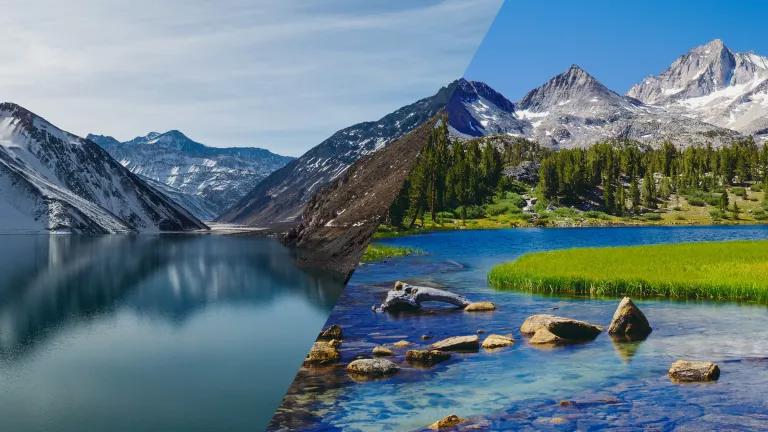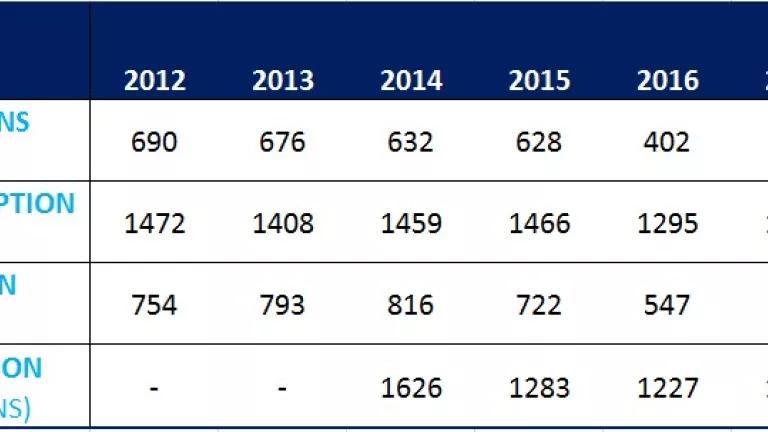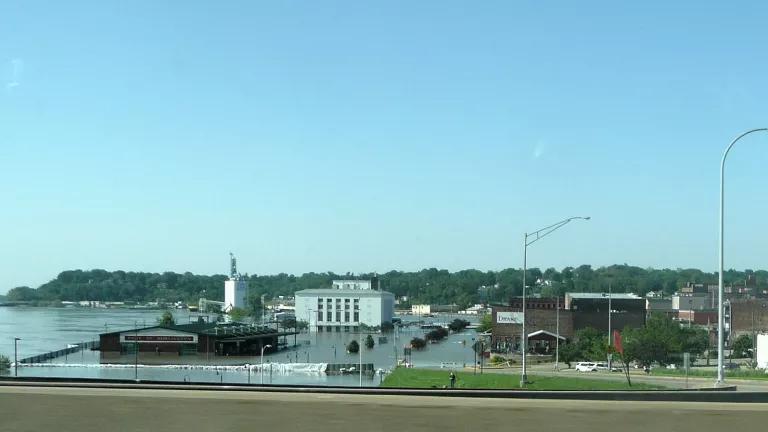
California is suffering from a third year of drought, with near-record-low reservoirs, mountain snowpack, soil moisture, and river runoff. As a direct result, far less water than usual is available for cities, farms, and natural ecosystems. There are far-reaching effects that will intensify if dry conditions persist. Several response strategies are available that will provide both near-term relief and long-term benefits. This report from NRDC and the Pacific Institute examines the significant potential contributions available from four priority opportunities: improved efficiency in urban and agricultural water use, reuse and recycling of water, and increased capture of local rain water.
The Nature of the Challenge
California is a land of hydrological extremes, from water-rich mountains and redwood forests in the north to some of the driest deserts in North America in the south. It suffers both epic floods and persistent droughts. The existing water infrastructure and management systems reflect these extremes, with massive dams, canals, and pumping stations to store and transfer water, and hundreds of intertwined laws, institutions, and organizations promoting overlapping and sometimes conflicting water interests. The drought could end next year or it could continue, with even greater consequences in the coming years. But even during good years, disputes over water are common and claims of water shortages rampant. Dry years magnify disagreements over allocation, management, and use of California's water resources.
For much of the 20th century, California's water supply strategy has meant building reservoirs and conveyance systems to store and divert surface waters, and drilling groundwater wells to tap our aquifers. Hundreds of billions of federal, state, and local dollars have been invested in these supply options, allowing the state to grow to nearly 40 million people with a $2 trillion economy. But traditional supply options are tapped out. Rivers are over-allocated even in wet years. There is a dearth of new options for surface reservoirs, and those that exist are expensive, politically controversial, and offer only modest improvements in water supply for a relatively few users. Groundwater is so severely overdrafted that there are growing tensions among neighbors and damage to public roads, structures, and, ironically, water delivery canals from the land subsiding over depleted aquifers.
Opportunities
The good news is that solutions to our water problem exist. They are being implemented to varying degrees around the state with good results, but a lot more can be done. During a drought as severe as the current one, the incentives to work cooperatively and aggressively to implement solutions are even greater. In this report, we examine the opportunities for four cost-effective and technically feasible strategies -- urban and agricultural water conservation and efficiency, water reuse, and stormwater capture -- to improve the ability of cities, farmers, homeowners, and businesses to cope with drought and address longstanding water challenges in California. We conclude that these strategies can provide 10.8 million to 13.7 million acre-feet per year of water in new supplies and demand reductions, improving the reliability of our current system and reducing the risks of shortages and water conflicts.



